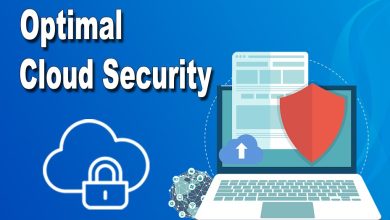Identity Theft – Fraud Detection and Risk Assessment

In the prior days, you knew who you were dealing with. One knew their company name, their associates, where they resided, and how much you could believe them. The period is long gone, as we exist in huge and huge cities. Now, the retail industry is a $2 trillion company and growing at 24% per year. The company operates across the world, so how can you learn who you are dealing with? How can you combat scams and reduce uncertainty when the potential for identity theft is a snap away?
With so much of our lives now befalling online, treasure troves of PII are on huge datasets, only a single breach away from befalling in the hands of criminals or authorized crime groups. The issue is so common now that you can conduct an identity document for as little as three dollars on the obscure platform. Or, imposters can develop synthetic identities dependent on data points of legitimate identity documents to employ for verifying users.
How to Prevent Identity Fraud?
The aim is to guard your user’s data and take all proper measures to alleviate any identity theft. The expenses of detection are nothing when associated with the expenses of a breach, both monetarily and your company repute.
Your company also requires you to take all appropriate steps to reduce identity criminals from opening bank accounts, buying items, authorizing your software to perpetuate or prolong their plan. Dependent on how identity theft happens, you can sustain the monetary balance and take the failure directly. Moreover, if you can chargeback, there’s the energy and amount to authorize with the problem, as well as possibly affecting your relationship with your service provider.
Five Measures to Mitigate Identity Theft
1. End – recognize who works there
The ideal time to halt criminals is at the door, account opening before they are able to do any harm to the company. The initial step is IDV. That is a necessity for AML and periodic KYC compliance and assists mitigate identity theft by recognizing data mismatches.
Do your CDD, comprehend the nature of the user and the possible danger they impose. In specific circumstances, suppose an extra layer of authentication, by performing a perpetual KYC check. You can also adopt fraud prevention mechanisms to give further risk assessment options.
2. Know the fraudster
Comprehend the methods that recognize criminals are adopting, both entire trends and particular processes.
By understanding that criminals tend to adopt massive methods, you can also view multiple applications at around a similar time using a similar mobile number and email address. Another sort of identity theft gaining prominence is the digital gift card scam, which amounts to 10.5% of all online scam attempts in 2018.
3. Keep a keen eye
There are several fraudulent activities that continuous AML can detect. Suspicious purchases, addresses, tools, volume, or value can all be tools of trouble. Not all accounts are similar, so not all monitoring is similar; develop risk profiles to recognize how tightly to examine several accounts. Also, don’t view accounts in solitude, the more you can trace across several accounts, the more beneficial profile you can match for.
4. Reflect before you perform
Don’t be at the sympathy of fraudulent activities to recognize how you’ll operate. Your methods must understand several scenarios and have measures to deal efficiently with fraudsters. Evaluate and modify these methods on a continuous basis and ongoing monitoring them to make sure they are able to defend your company.
5. Explain it, preach it
Fraud detection is a company-wide operation. Some of the most desirable identity theft attacks adopt social engineering to collect personal data from staff members. Or, a staff member might see something “unusual” but they don’t know what to do about it.
Conduct and sustain proper training and continuous laws for all staff members. More than that make sure of a secure-data atmosphere. Several of the similar fraud detection processes can assist protects people’s use to employees; by making every staff member understandable and authorized, you minimize the choices for criminals to gain authorization to your safety systems.
Conclusion
While it’s important to guard your company against identity theft, you require doing so in a manner that is user-friendly. Serious layers that require too long will point to user abandonment and lower user satisfaction levels.
Adopting proper fraud detection methods along with up-to-date digitization will enable you to hold identity theft in control, while efficiently assisting your users. The further you know your users, the greater you can assist them and the more limited risks you’ll encounter from identity theft.




